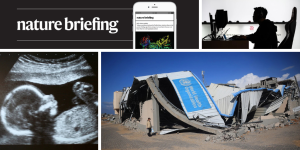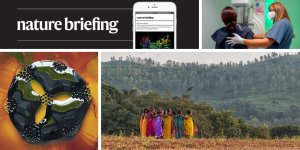
Trump 2.0. is an assault on science everywhere
The research enterprise of the United States is helping the nation and the world: How scientific workers were laid off in the wake of the Trump administration?
The amount of damage done to the US research enterprise is so huge, it’s hard to articulate how much it means to the nation and world. The global scientific communities are starting to react. More need to speak out in support of their US colleagues. The US scientific and educational communities must know that they are not alone. The assault on science and scientists is occurring all over the world.
An employee of the National Institute of Health who lost part of their laboratory to the job cuts and didn’t want to be identified for fear of reprisals, says “I can’t even convey how cruel the layoffs are.” Workers who received e-mails telling them that they were being let go got a blanket reason of poor performance, even if their supervisors rated them exceptional. The researcher says that they took some of the best people in the government and laid them off.
The United States was expected to pull out of the Paris agreement to rein in global climate emissions and the nation’s membership in the World Health Organization. Others had surprising and immediate ripple effects through the scientific community.
Another executive order mandated the cancellation of policies and initiatives in diversity, equity and inclusion, which the Trump administration has incorrectly described as illegal, radical and wasteful. Cancelling public initiatives that create inclusive and welcoming spaces, and stopping federal funding for the study of these issues, could cause harm. Equally, there is no justification for cancelling policies and funding for initiatives that recognize the complexity of sex and gender, something the White House wrongly calls “gender ideology extremism”.
Another executive order banned what Trump called “illegal and immoral discrimination programs, going by the name ‘diversity, equity, and inclusion’ (DEI)”. The e-mail warned government workers that if they didn’t report colleagues who disobeyed the DEI orders, they would face adverse consequences. Environmental-justice efforts, which were designed to protect low income communities vulnerable to pollution and climate change, were terminated by agencies. Some scientific societies and private research organizations scrubbed their DEI mentions from their websites. In one of Trump’s orders, he called for the investigation of foundations, non-profit organizations and other private entities not in compliance.
After a week in office, the budget office of the Trump administration decided to freeze all federal grants and loans to review government spending and align it with executive orders. Chaos erupted as agencies, including the NIH and the US National Science Foundation (NSF) — both major funders of basic science — halted grant payments, cancelled review panels for research-grant funding and paused communications. A federal judge temporarily blocked the order, but disruptions and confusion continue.
A university scientist who requested anonymity for their research reasons says that some of the investigators in their research teams are suffering due to the environment. They say that everything is on you to manage your grants and your team because they say there’s a lot of fear of people not saying or doing the right thing. I am losing sleep because it is completely chaotic.
Trump and Musk formed a partnership that has flourished. The pair are working together to slash federal spending and dismantle agencies such as the US Agency for International Development, which funds global disease research, prevention and care.
The department of government efficiency, which Musk advises, is working to accomplish this goal by demoralizing the federal workforce. About 75,000 employees resigned on the promise that they would keep their salary until September, after they were asked to move from lower productivity jobs in the public sector to higher productivity jobs in the private sector. In mid-February, layoffs began for probationary employees across the US government — those usually hired into their positions within the past two years, meaning that early-career researchers were particularly affected.
The U.S. scientific workforce has a problem: why students, postdocs, students and researchers are afraid to leave their jobs due to disruption and uncertainty
The first in her family to go to university, Suzanne Autrey pushed herself to the brink chasing an academic career. She is now an assistant professor at Northern Illinois University in DeKalb, and takes delight in teaching geology to other first-generation university students. “I know first-hand that a degree to them doesn’t just change their lives,” Autrey says. “It changes their families’ lives.”
“Disruption and uncertainty are the enemy of science,” says Donna Ginther, an economist at the University of Kansas in Lawrence. And when disruption and uncertainty strike, she adds, “the people who lose their jobs are students and postdocs”.
Employees of other federal agencies have the same fear. An NIH diversity grant pays the salary of a neuroscience researcher at the University of Maryland. Popal counts himself lucky: this year’s salary has already been allocated. But the Trump administration has threatened any funding that falls under the rubric of diversity, equity and inclusion (DEI) initiatives, and Popal is not counting on getting paid next year. He’s looking for other jobs now, especially any that do not rely on federal funds — even if that means leaving science. “I love my research,” he says, “but I cannot afford to lose a pay cheque.”
Some young scientists may choose to leave the country because of the uncertainty. More than 35,000 science PhD graduates were born in the United States. Not all of them will choose to stay in science, but whether those who do and seek to leave the United States could be absorbed by other countries is unclear. “I don’t know that the world’s scientific enterprise can absorb the potential loss of talent that we’re creating in the United States,” says Ginther.
The instability in the United States has made Pavlinek rethink his plans. “I’m worried that four or five months after I move all my stuff there, I’ll be told, ‘Actually there’s no more funding,’” he says. He has begun searching for positions in the United Kingdom.
How, then, should those of us in the global enterprise of education, health, science and engineering respond? One priority must be to denounce these actions, to shout about their negative effects, to support researchers and to defend their ability to work and study without fear for their jobs. Even if you work for a federal agency and feel powerless to speak up, other organizations, such as universities, scientific societies, businesses, labour unions and campaign groups have more freedom, and need to show support for affected colleagues.
There are different opinions of researchers in different scientific fields. Discussion and further study are the best ways to understand each other. Not a solution is shutting down scholarship.
The World Bank’s Climate Crisis and the U.S. Plan for AIDS Relief: The Report of a Trump-Congress Congressional Budget Cutdown
Over 10,000 members of the agency’s staff have been put on leave. Its website is currently unavailable, but most of its buildings are. Life-saving programmes are not exempt from any immediate changes but there are no functioning financial systems available to keep the payments going. Since 2003 the United States President’s Emergency Plan for AIDS Relief has disbursed over $100 billion to fight HIV and AIDS, but it is still up in the air.
One million women have lost access to contraceptive care around the world in the last three months due to a 90-day halt on funding from the US Agency for International Development. In 2023, the United States disbursed $72 billion in international assistance, some 60% of which was provided through USAID.
10% of global public climate finance is due to the cancellation of US federal funding for international climate change projects. Alongside his decision to withdraw from the 2015 Paris climate agreement, this is a severe blow to tackling climate change, and will delay efforts to boost finance for the countries most affected by global warming.
The decision to scale back or withdraw long-standing commitments will have an impact on international relations. The United States is often the largest contributor to global initiatives directly linked to the United Nations Sustainable Development Goals (SDGs), the world’s plan to end poverty and achieve environmental sustainability. The core budget of the WHO is one-fifth of the country’s, which Trump has already notified of his intent to leave. The WHO’s more than 8,700 staff members have already been told to put all but essential travel on hold, because the United States will not officially leave until next year.
The White House may have to moderate or reverse some of it’s actions as individuals and organizations challenge some of its actions in the courts. The direction of travel is clear, and there is a desire to make less independent, science-based evidence and expert advice.

